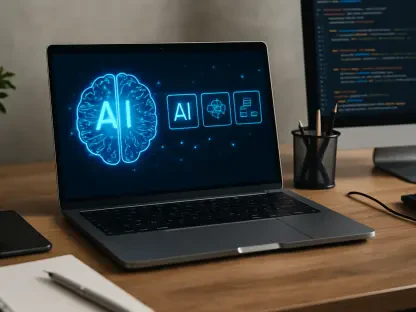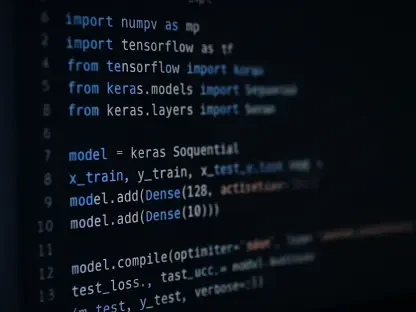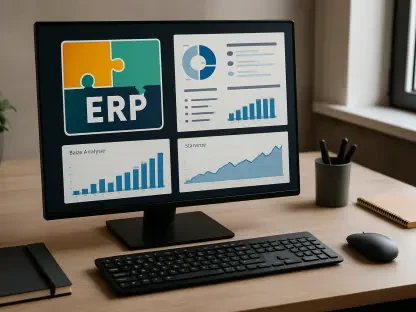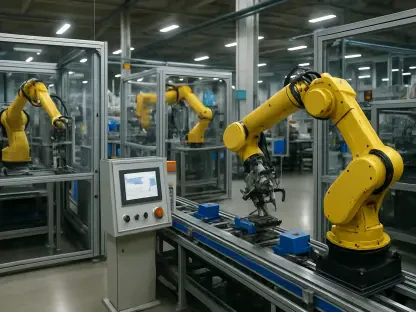In a significant move for software development in the machine learning sector, Microsoft has brought native PyTorch support to Windows devices powered by Arm architecture. By eliminating the arduous task of compiling PyTorch from source, which previously posed a daunting challenge for many developers—especially those new to the field—this advancement now permits seamless integration of PyTorch for a wide range of applications. With the current release, developers can now easily install the framework using standard package managers, such as pip, while benefiting from the full capabilities of the Arm64 architecture in Windows environments. This development is expected to propel machine learning projects forward, expanding their reach and enhancing their performance.
Advancements in Machine Learning for Windows on Arm
Simplifying Installation with Integrated Package Managers
The introduction of native PyTorch builds for Windows on Arm revolutionizes the installation process for machine learning environments. Where previously developers faced complexities in compiling PyTorch from source, a task fraught with potential errors and significant time investment, the new integration with Python 3.12 now offers a much more efficient alternative. By employing common package managers like pip, the installation has been streamlined, facilitating easier access for developers and researchers who rely on PyTorch for projects requiring high computational efficiency. This change marks a significant leap in usability, drawing enthusiasm from those invested in the rapid development and testing of machine learning models.
Beyond ease of installation, the native support stands to significantly enhance the operational capabilities of the Arm64 architecture on Windows, paving the way for more intricate projects involving image classification, natural language processing, and advanced AI tools such as Stable Diffusion. By providing native builds, Microsoft is setting a new standard in developing machine learning models, enabling researchers to conduct comprehensive testing and training directly on their Arm-powered Windows devices. This advance fosters a more inclusive ecosystem where developers can leverage the full functionality of their hardware without additional software complications.
Enhancing Accessibility for Developers and Researchers
The native PyTorch support is not just a technical improvement; it’s a stride towards making machine learning more accessible. Prior to this development, the requirement to compile from source placed a barrier to entry for those new to machine learning, often necessitating specific technical expertise. This barrier has been removed, allowing a broader audience to engage in research and development with reduced complexity. Microsoft emphasizes that these advancements are designed to democratize technology, enabling developers and researchers at various levels to create and test sophisticated models more efficiently.
Furthermore, this update opens up opportunities for exploration beyond traditional machine learning applications. With an efficient pathway now established, experimental features can be tested via Nightly or Preview builds, allowing developers to push boundaries in a controlled and manageable way. The presence of native builds also extends to LibTorch—PyTorch’s C++ front end—thereby supporting a wider array of deployment scenarios. These integrations reinforce the commitment to creating an accessible and versatile developmental landscape, where both seasoned and novice developers can thrive.
Addressing the Challenges and Opportunities Ahead
Overcoming Dependency Limitations
Despite the significant benefits of this new development, certain challenges still remain, particularly concerning dependencies. Not all libraries associated with PyTorch, especially those written with performance-intensive languages like C, C++, or Rust, have Arm-native builds available on existing platforms like PyPI. This can present obstacles in fully realizing the performance potential inherent to the Arm architecture. To navigate these challenges, developers may need to rely on pip’s capability to compile necessary components from source, ensuring that sufficient build tools are in place to facilitate this process.
Although potentially cumbersome, this process highlights a crucial consideration in the adaptation to native Arm support: the need for a robust ecosystem that fully complements the technology. As the machine learning community continues to adapt to this architecture, increased collaboration is expected among developers and contributors to expand available pre-compiled resources. This collaborative effort underlines a community-driven response to aligning library support with Arm64 requirements, fostering an expanding landscape to accommodate seamless usage across all applications and sectors.
Future Directions for Arm-Powered Machine Learning
As Microsoft’s strategic commitment to advancing Arm-powered machine learning environments becomes clearer, the implications for the future of software development on Windows continue to expand. With a growing emphasis on fostering environments conducive to modern computational needs, the implications of such advancements are vast. Beyond just improved performance and ease of use, this shift towards supporting native Arm architecture signals broader industry trends towards greater integration and specialization in machine learning frameworks.
Further developmental efforts can be expected to enhance the sophistication and capabilities of these environments, ultimately leading to breakthroughs in efficiency, accessibility, and functionality. As groundwork is laid for future enhancements, developers are encouraged to engage with these new opportunities, pushing the envelope in both research and applied environments. By embracing these innovations, the potential for groundbreaking projects across sectors becomes increasingly attainable, bridging the gap between emerging technology and tangible real-world applications.
Progressing Towards an Inclusive Development Future
In a notable advancement within the realm of software development for machine learning, Microsoft has introduced native PyTorch support for Windows devices utilizing Arm architecture. Previously, many developers found the task of compiling PyTorch from source to be an intimidating hurdle, particularly for those who were newcomers to the industry. This challenge has now been mitigated, allowing the smooth incorporation of PyTorch across a variety of applications. The latest release enables developers to effortlessly install this framework through standard package managers like pip, taking full advantage of the Arm64 architecture within Windows environments. This development is anticipated to significantly boost the progress of machine learning projects, broadening their reach while optimizing performance. As this integration endows developers with enhanced tools and capabilities, it is predicted to spur innovation within the industry. Ultimately, this move is set to expand opportunities for developing advanced machine learning solutions on Windows platforms.









